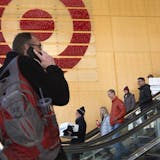The first time I knew our new Nissan Leaf was a dud came when I was stranded — with a nearly drained battery — in a St. Cloud parking lot, calling in on Zoom as a panelist at a turkey convention that I couldn't reach in time.
These are the kinds of gigs you get invited to as an agriculture journalist in Minnesota — and meeting farmers face-to-face is a crucial part of my job in understanding the communities I cover. So I'd left our home in Minneapolis bright and early to reach Alexandria, where I had planned to join the panel.
Driving our electric vehicle (EV) around Minnesota as a farm reporter over the prior two months had proven, well, adventurous. Our state does not yet have widespread adoption of electric charging infrastructure — and I've got the battle stories to prove it.
America says it wants more electric vehicles. And for good reason: Gas-guzzling is an addiction that is overheating our planet. This summer, the Biden administration rankled car dealers when it called for 75% new vehicles by 2032 to not carry any internal-combustion engines.
Now, after owning an EV more than six months — and using that vehicle for work as a journalist that involves predominantly driving across rural America — my personal experience suggests we're unprepared to help consumers successfully transition.
One question that emerges: Will EV become the Ford Pinto, a once-hyped car that soon fell out of favor?
EVs are a key part of our nation's energy transition, but the wide-open spaces of rural Minnesota present huge infrastructure hurdles. The Public Utilities Commission and outstate entities, such as Otter Tail Power, have acknowledged this to be true. But the current pace of building out stations is dampening the success.
The chargers are too far apart, too few and not universally well-maintained.



